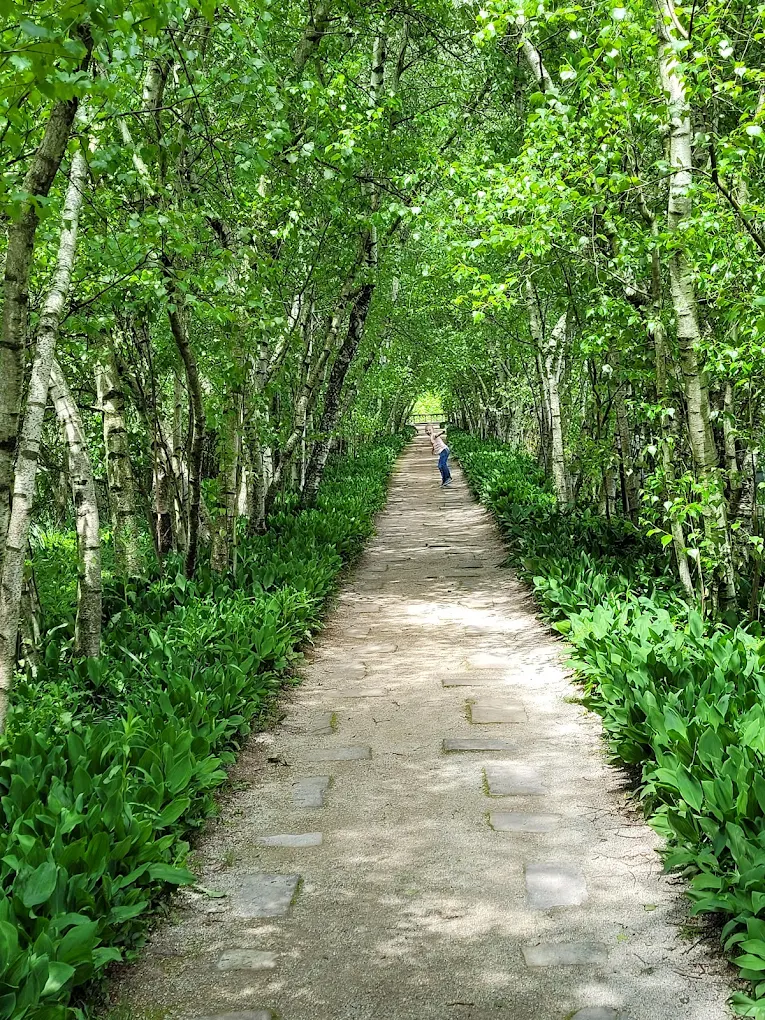Deep in the heart of Ohio’s Hocking Hills region, in a place where darkness still reigns supreme, lies the John Glenn Astronomy Park – a remote sanctuary where the night sky reveals its ancient secrets. Located in rural southeastern Ohio, this dark sky oasis represents one of the few remaining areas in the state where the night sky can be seen in its near pristine state, unmarred by the light pollution that has claimed so much of our celestial heritage.
A Hidden Haven for Sky Watchers
The John Glenn Astronomy Park sits atop a hill with sweeping views in all directions, creating the perfect vantage point for experiencing the cosmos as our ancestors once did. Built on an old piece of farmland that was generously donated for this purpose, the park preserves both its agricultural heritage and its commitment to dark sky preservation. You can still see the classic Ohio farmhouse near the entrance, but the real magic happens further back on the property, in a large clearing free of tree canopy where the glow from Columbus appears as just a distant murmur on the horizon.
Where Science Meets Wonder
Named after John Glenn, the Ohio native who became the first US astronaut to orbit the Earth, this state-of-the-art facility goes beyond simple stargazing. The park features a modern observatory with a 28-inch telescope that provides visitors with breathtaking views of the night sky, along with several smaller telescopes for public use. The site also includes an educational plaza designed with historical structures in mind, drawing inspiration from Stonehenge in England, the Chaco Canyon Kiva in New Mexico, and the Hopewell and Fort Ancient Earthworks in Ohio.
A Plaza Aligned with the Cosmos
The plaza has been carefully designed to allow the rays of the sun to fall upon a special central point on the first day of each of the four seasons, connecting visitors to the countless generations of humans who marked the important changes of the seasons through the motion of celestial bodies. This thoughtful design creates a tangible connection between modern astronomy and ancient sky watching traditions.
The Magic of Dark Skies
What makes this location truly special is its exceptional dark sky conditions. The park enjoys a small pocket of light pollution-free sky, surrounded by thousands of acres of forest within Hocking Hills State Park. Visitors regularly report being able to see meteors, shooting stars, and the spectacular band of the Milky Way stretching across the heavens – sights that have become impossible to see from most populated areas.
Milky Way Viewing Paradise
The Milky Way is most visible at the park from February through October, with peak viewing times usually occurring from May through mid-August. During these months, that classic view of our home galaxy painted diagonally across the sky creates an unforgettable experience. For the best viewing, visit on an evening when the moon is faint or during a new moon, when the galaxy’s intricate details become most apparent.
Programs That Bring the Universe to Life
On clear Friday and Saturday nights from March through November, the park offers guided stargazing programs starting half an hour after sunset. These involve laser-guided tours of the constellations and features of the sky, where knowledgeable volunteers share the stories written in the stars above. Programs cover everything from the drama of Cassiopeia, Andromeda and Perseus to the rugged mountains of the moon and the glorious rings of Saturn.
Special Celestial Events
The park regularly hosts programs focused on specific astronomical phenomena. Recent offerings have included “The Moon Illusion,” where visitors learn why the full moon appears uncannily large when it rises, and “Happy Birthday John Glenn,” celebrating the life and achievements of Ohio’s space pioneer. Each program combines education with hands-on observation, making complex astronomical concepts accessible to visitors of all ages.
Aurora Adventures
During periods of high solar activity, the park has become an unexpected viewing location for the northern lights. During solar maximum periods, Ohio skies have been graced by multiple strong auroral displays, with the park’s location and dark skies providing excellent viewing conditions for these rare celestial light shows. The park’s website and social media provide updates when aurora viewing conditions are particularly favorable.
A Photographer’s Dream
The John Glenn Astronomy Park has quickly become one of the premier astrophotography destinations in Ohio. The combination of 360-degree views of the night sky and minimal light pollution creates ideal conditions for capturing stunning images of stars, planets, and deep sky objects. The open meadow setting eliminates the tree and building obstructions that typically interfere with wide-field sky photography.
Open Access to Wonder
One of the most remarkable aspects of this facility is its accessibility. The park is open 24 hours a day, seven days a week, allowing visitors to experience the night sky whenever conditions are favorable. While parking passes are required for the popular Friday and Saturday evening programs, visitors can freely drive up on any other night to enjoy individual stargazing sessions. Many visitors bring their own telescopes, chairs, cameras, and tripods to create their own cosmic adventures.
Planning Your Celestial Journey
Located about an hour from Columbus, two hours from Cincinnati, and three hours from Cleveland, the park offers an easily accessible escape from urban light pollution. The facility is just a mile from Old Man’s Cave, making it a perfect complement to a Hocking Hills adventure. Visitors can walk to the park from nearby Hocking Hills State Park cabins, with a designated walking path between cabins 8 and 9.
Weather and Timing
Like all astronomical endeavors, visits to the park are at the mercy of Ohio’s notoriously fickle weather. The park provides detailed weather forecasts and sky condition predictions to help visitors plan successful trips. Clear, dark blue conditions on the forecast indicate optimal viewing opportunities, while cloudy conditions can completely obscure celestial objects.
A Return to Our Cosmic Roots
In an age when light pollution has disconnected most people from the night sky, the John Glenn Astronomy Park offers something increasingly rare – a chance to see the universe as it was meant to be seen. Here, visitors rediscover their connection to the cosmos, experiencing the same sense of wonder that has inspired humans to look up at the stars for thousands of years.
Whether you’re a serious astronomer with professional equipment or someone who simply wants to lie on a blanket and watch for shooting stars, this remote corner of Ohio provides an unforgettable window into the infinite. In a world where true darkness is becoming extinct, the John Glenn Astronomy Park preserves a precious piece of our celestial heritage, ensuring that future generations can still experience the magic of a truly dark night sky where the universe comes alive in all its glory.
remote-spot-night-sky-comes-alive Ohio John Glenn Astronomy Park in Hocking Hills offers pristine dark skies for stargazing, featuring a 28-inch telescope and programs showcasing Ohio’s celestial wonders.


